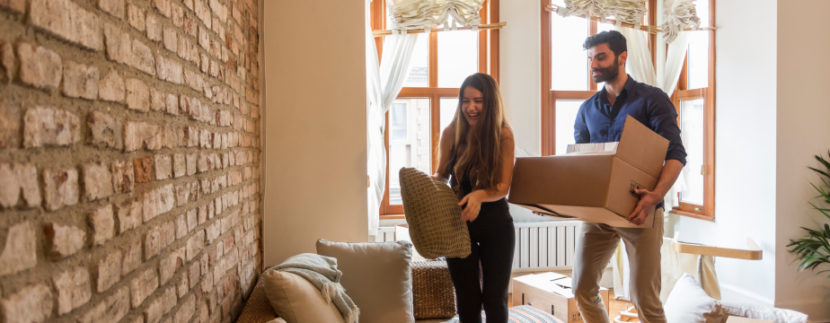
While you save up your down payment, take these 5 steps to get you closer to closing.
For renters planning to buy a home, preliminary steps like creating a budget and saving for a down payment are obvious. Here are five more advanced steps toward moving out of your rental and into a dream home of your own.
Understand the full cost of homeownership
As a renter, a single rental fee covers your monthly housing payment. But as a homeowner, four main factors go into your monthly housing payment: principal, interest, taxes and insurance (P.I.T.I.). Understanding these costs will help you determine how much house you can afford.
Together, principal and interest comprise your monthly mortgage payment, with the principal paying down your loan balance each month, and the interest paying your fee for borrowing the money. Use a mortgage calculator to determine how much of your payment goes toward principal versus interest each month.
Taxes refer to property taxes, which are assessed by the county you live in. They average 1.2 percent of your home’s value each year.
Insurance — paid to a homeowner’s insurance company of your choice — is required when you have a mortgage. Lenders require that your insurance cover the cost of rebuilding the home if it is ruined by fire or other disaster. This “replacement cost” is determined by your insurer, and must be agreed to by your lender. Insurance will typically cost $700 to $1,200 per year for a single family home.
For condo owners, there’s a fifth monthly cost category: homeowners association (HOA) dues. These fees cover common area amenities, landscaping, ongoing upkeep and reserves for future maintenance like roof replacement or exterior painting. These monthly dues range from $100 for cheaper condos to $1,000 or more for luxury condos.
Single family home buyers can take a useful cue from HOA budgets, which generally require that at least 10 percent of dues go toward reserves. Even if you’re not buying a condo, it’s a good idea to set up a similar savings plan for future maintenance like replacing a roof or major appliances.
Know your homeowner tax benefits
Mortgage interest and property taxes are deductible when you file your annual tax returns, and reduce taxable income.
These deductions significantly lower your cost of homeownership. For example, for a $300,000 home with 20 percent down and a 30-year fixed mortgage at 4 percent, monthly P.I.T.I. is about $1,545. Tax deductions reduce this total housing cost to about $1,215.
Study rent-vs.-buy math
Often, people judge the cost of renting vs. buying by comparing P.I.T.I. to a rental payment. But to get an apples-to-apples comparison, you actually have to look at after-tax-benefit homeownership costs and rent costs.
Using the example above of a $300,000 home that costs $1,215 per month after taxes, you could compare this residence to a home that rents for about $1,200. If the $300,000 home was more spacious or in a more desirable area, the math would seem to favor buying — but don’t forget this example requires a $60,000 down payment.
Identify mortgages that fit your budget and timeline
If you don’t have 20 percent to put down, you can still get a mortgage with as little as 3 percent down. However, if your down payment is less than 20 percent, you’ll have to pay mortgage insurance, which is about .85 percent of your loan amount, and isn’t tax deductible.
Your monthly P.I.T.I. (which includes mortgage insurance) is about $1,995 on a $300,000 home with 3 percent down and a 30-year fixed mortgage at 4 percent. After tax deductions, this total housing cost drops to about $1,614. And you’d only need $9,000 for the down payment.
You can also lower your rate and P.I.T.I. with a shorter-term loan like a 5-year ARM, but rates on these loans will adjust in 5 years, so you risk having a much higher payment if you plan to stay in the home longer than that.
Start preparing your credit score now
Credit scores are critical for getting the best mortgages with the lowest rates. Lenders want reliable on-time payment history as well as credit depth.
More credit accounts are better, so renters with only one credit card should consider obtaining more credit. Just note that your credit score can drop 5 to 15 points when you first open a new account, then will come back up when you’ve established a good payment history.
